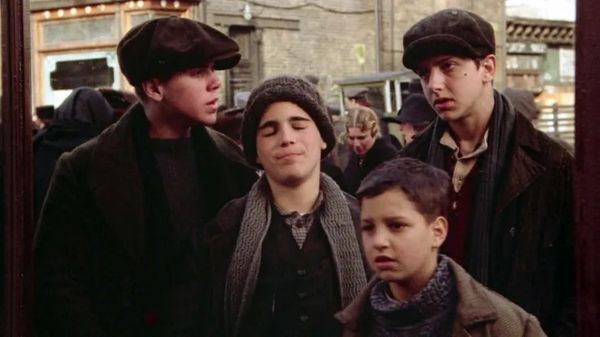Once Upon a Time in America (1984)

Once Upon a Time in America is a monumental film that explores the intricate tapestry of friendship, ambition, and betrayal set against the backdrop of organized crime in early 20th-century America. Directed by Sergio Leone, this 1984 epic has garnered a reputation as one of the most significant films in the gangster genre, known for its sweeping narrative and profound themes.
The film unfolds through a non-linear narrative, which takes viewers on a journey through the lives of its central characters—Noodles (Robert De Niro), Max (James Woods), and their childhood friends. Beginning in the 1920s, the story captures their youthful exuberance as they engage in petty crime and dream of greatness. As they navigate the complexities of their relationships and the harsh realities of their environment, the film delves deep into themes of loyalty, ambition, and the often brutal consequences of their choices.

At the heart of the film is the relationship between Noodles and Max, which evolves dramatically throughout the story. Their bond is initially forged in the fires of friendship and shared dreams, but as ambition takes hold, their paths diverge. Max’s relentless pursuit of power and status leads to a rift between the two, culminating in betrayal and heartache. This central conflict not only drives the narrative forward but also serves as a poignant commentary on the darker aspects of the American Dream.

The film’s exploration of memory and regret adds layers of complexity to its characters. Noodles’ return to New York after years in exile prompts him to confront his past and assess the choices that have shaped his life. Through flashbacks, viewers witness the innocence of their youth juxtaposed against the harsh realities of their adult lives, creating a haunting reflection on the passage of time and the weight of regret.

Sergio Leone’s direction is a masterclass in cinematic storytelling. Known for his meticulous attention to detail, Leone crafts each scene with a painterly quality, using long takes and sweeping cinematography to immerse viewers in the film’s richly textured world. The cinematography, handled by Tonino Delli Colli, captures the essence of the era, from the vibrant streets of New York to the shadowy corners of speakeasies. This visual storytelling enhances the emotional resonance of the film, inviting viewers to experience the characters’ joys and sorrows.

The score, composed by Ennio Morricone, is another standout element of the film. Morricone’s haunting melodies evoke a sense of nostalgia and longing, perfectly complementing the film’s themes. The music serves as a powerful narrative device, heightening the emotional impact of key moments and drawing viewers deeper into the characters’ experiences.
Upon its release, Once Upon a Time in America received a mixed reception, with some critics finding fault in its lengthy runtime and complex narrative structure. However, over the years, it has undergone a reevaluation, emerging as a classic that resonates with audiences and critics alike. Its exploration of the human condition, the nature of friendship, and the pursuit of dreams continues to captivate viewers, making it a significant work in the canon of American cinema.
In conclusion, Once Upon a Time in America is not just a film about gangsters; it is a profound exploration of life, love, and the consequences of ambition. Through its intricate storytelling, stunning visuals, and haunting score, the film leaves an indelible mark on its audience. As viewers follow the characters’ journeys through triumph and tragedy, they are invited to reflect on their own lives and the choices that define them. This epic tale stands as a testament to the power of cinema to illuminate the complexities of the human experience.











